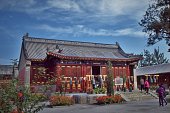Wine Tasting
페이지 정보
작성자 Carole Baehr 작성일24-12-04 03:57본문
Wine Tasting
What is the tasting process?
The tasting course of in wine tasting entails a quantity of key steps that assist evaluate and appreciate the complexities of wine. Here’s a breakdown of every stage:
1. Observation
Begin by analyzing the wine’s appearance. This includes:

- Color: Observe the hue, which might present insight into the age and sort of the wine.
- Clarity: Look for any cloudiness or sediment.
- Viscosity: Swirl the wine and observe the legs that kind on the glass; thicker legs might indicate higher alcohol content or sweetness.
2. Swirling
Gently swirl the wine within the glass to aerate it, which enhances its aromas. This motion encourages risky compounds to flee, enriching your sniffing experience.
3. Smelling
Bring the glass to your nostril and take a deep breath. Identify completely different aromas, which can range from fruity, floral, spicy, to earthy. Think about:
- Intensity: How sturdy are the aromas?
- Complexity: Are there multiple layers of scents?
4. Tasting
Take a small sip of the wine and let it coat your palate. Focus on:
- Flavor: What flavors do you detect? Are they similar to the aromas?
- Body: Is the wine mild, medium, or full-bodied?
- Balance: Consider the relationship between acidity, sweetness, tannins (in reds), and alcohol.
- Finish: Pay consideration to the aftertaste; does it linger? What flavors remain?
5. Reflecting
Take a moment to appreciate the overall experience. Consider how the wine makes you're feeling and whether you want to take pleasure in it once more. Document your impressions if you’re tasting multiple wines!
Following these steps can enhance your wine-tasting expertise, permitting you to understand the intricacies of different varieties and types.
What is wine tasting session?
A wine tasting session is an organized event the place people can sample and evaluate various wines. It is a chance to discover completely different wine varieties, perceive their distinct flavors, and study concerning the wine-making course of.
Key Components of a Wine Tasting Session
- Selection of Wines: A number of wines are chosen for the tasting, typically focusing on a particular region, grape variety, or fashion.
- Tasting Techniques: Participants are guided on how to properly taste wine, which incorporates trying, smelling, and sipping to analyze the wine’s traits.
- Food Pairings: Some periods might embrace food pairings, enhancing the tasting experience by demonstrating how sure foods complement specific wines.
- Expert Guidance: Typically, a sommelier or HiOP wine professional leads the session, offering insights and answering questions about every wine.
Common Objectives of Wine Tasting
- To develop an appreciation for various wine styles and flavors.
- To educate participants about wine areas, grape varieties, and production strategies.
- To determine private preferences for wines.
- To foster social interaction amongst members by way of a shared expertise.
Overall, a wine tasting session is each an academic and pleasant occasion, good for wine fanatics and novices alike.
Is wine tasting formal?
Wine tasting can vary in formality depending on the setting and occasion. In some instances, it could be quite formal, taking place in upscale environments the place specific protocols are adopted. This could embrace guided tastings led by sommeliers, with a concentrate on the wine's traits and pairing suggestions.
On the opposite hand, wine tasting can be a casual expertise, such as at festivals, informal gatherings, or home tastings with pals. In these situations, the emphasis is often more on enjoyment and exploration rather than strict guidelines.
Formal Wine Tasting
In a proper wine tasting, participants might gown up, adhere to a schedule, and take part in structured evaluations of various wines. The use of specific terminology and the presence of a facilitator is frequent. Tasting notes could also be taken, and food pairings are sometimes included to reinforce the experience.
Casual Wine Tasting
Conversely, informal wine tasting permits for extra flexibility. Participants could merely pour and sip without any predefined construction or pointers. Discussions may be casual, specializing in personal preferences and experiences somewhat than technical particulars.
Ultimately, whether or not a wine tasting is formal or informal can depend upon the context and the preferences of these involved.
댓글목록
등록된 댓글이 없습니다.


